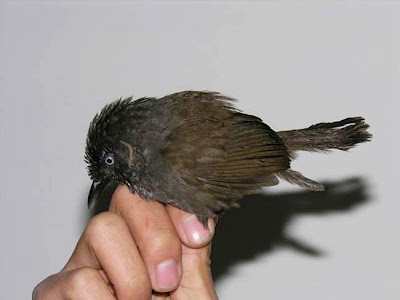
Another exciting animal news is going to show you the light hope if you really think about animals. Just lay back on your couch and spare a bit of thoughts about how fast animal species are getting extinct day by day. This animal news - a news of endangered species called Pyrenean ibex was flashed out on February 10, 2009 at the National Geographic News panels. Researchers have cloned a bucardo - Pyrenean ibex, which happened to be a subspecies of Spanish ibex that went extinct in 2000. Yes... never before this the extinct animal clone was created - though the clone had a very short span of life! But the good news is that the scientists could successfully create the clone of the extinct species and this was that first time that an extinct animal had been resurrected by cloning. Researchers had cloned endangered animal before this, but cloning of this Pyrenean ibex sparked into a topic of most talked about discussion, because this was the first time that clone had been created for an animal that had officially died out. The journal 'Theriogenology', described how the scientists used the frozen skin of a bucardo in 2003 to clone the extinct animal.
Study co-author Jose Folch, of the Center for Agro-Nutrition Research and Technology in Aragon, Spain said: "We are not especially disappointed for the death of the cloned newborn," Folch explained in an email, because such deaths in cloning experiments are common. We will try to improve the technology in order to increase the efficiency of the cloning process." According to him his team is planning to try cloning another Pyrenean ibex this year or next.

Folch and his team made clone embryos by inserting the DNA of the bucardo into domestic goat eggs. The Bucardo's DNA was sourced from the frozen skin samples taken from the lone specimen in the year 1999. Although the clones were successfully implanted into goat-ibex hybrids, but the baby had a very short span of life! Among all the 208 embryos implanted, only seven goats became pregnant, and just one bucardo were born. The baby bucardo died of respiratory failure almost immediately after the birth. Dissection showed that the bucardo had pulmonary dysfunctions, although the other organs were normal. The researchers said that such abnormalities are not uncommon in cloning. According to the scientists the environment in which an embryo develops should closely match to mitigate the problems during pregnancy.
For about a couple of centuries, wanton hunting had thinned out the population of Pyrenean ibex. The last living bucardo ended its journey in 2000, being hit by a falling heavy branch.
Smithsonian's Wildt recognized the work to be a "highly noteworthy scientific accomplishment" Wildt said "Offspring was produced from an animal well known to have suffered a recent extinction" and the bucardo story "is fascinating, because resurrection-by-cloning was the only option".









